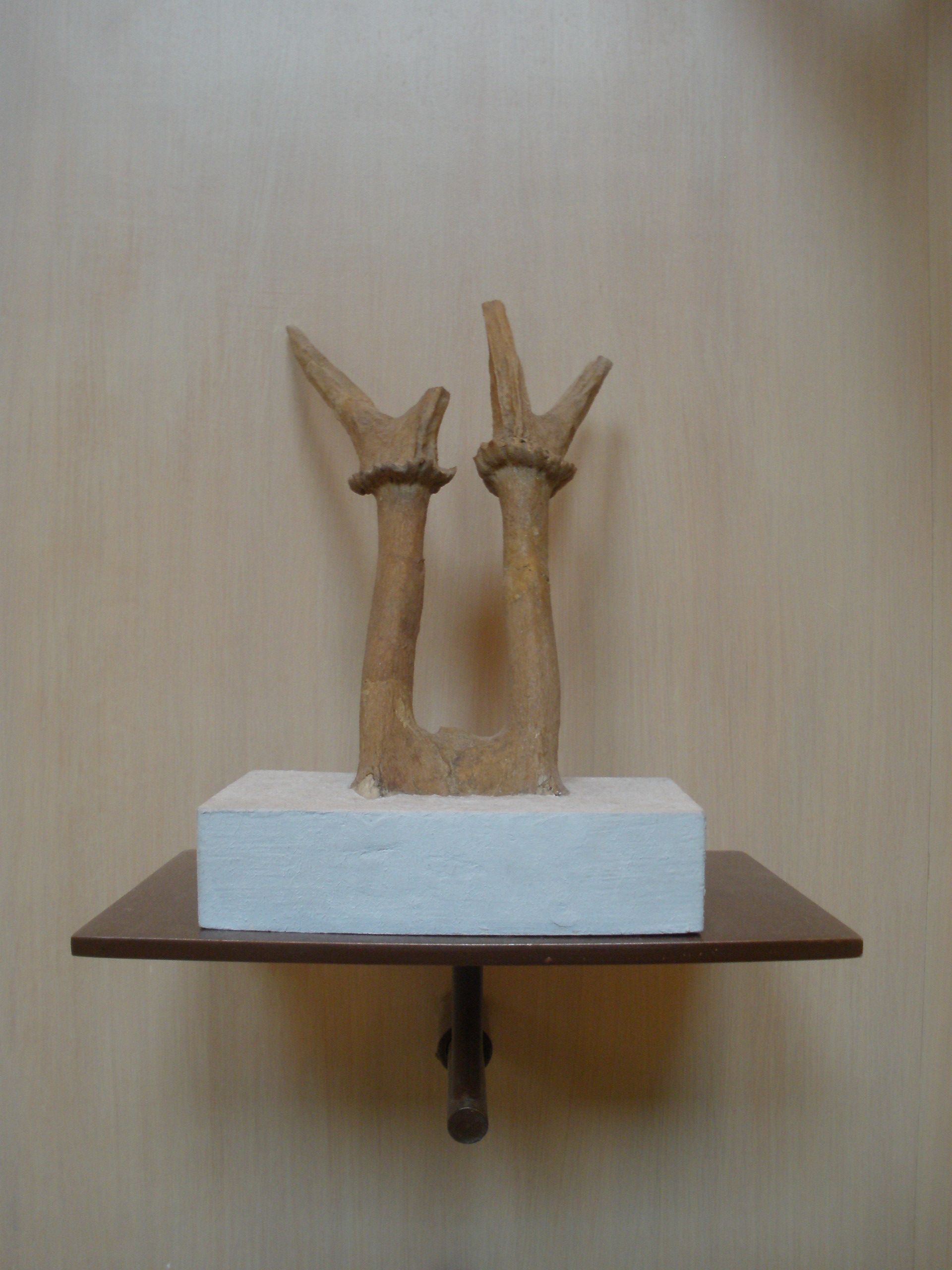Euprox on:
[Wikipedia]
[Google]
[Amazon]
''Euprox'' is an extinct genus of
 The antlers of ''Euprox'' were short, with two small prongs projecting from the main branch. ''Euprox'' is notable for being the earliest deer to possess the presence of a real burr, which are indicative of the border between permanent and deciduous segments of deer antlers. It possessed brachyodont teeth and likely fed on leaves. The environment that ''Euprox'' inhabited would have been warm and humid, with many tropical forests.
The antlers of ''Euprox'' were short, with two small prongs projecting from the main branch. ''Euprox'' is notable for being the earliest deer to possess the presence of a real burr, which are indicative of the border between permanent and deciduous segments of deer antlers. It possessed brachyodont teeth and likely fed on leaves. The environment that ''Euprox'' inhabited would have been warm and humid, with many tropical forests.
deer
A deer (: deer) or true deer is a hoofed ruminant ungulate of the family Cervidae (informally the deer family). Cervidae is divided into subfamilies Cervinae (which includes, among others, muntjac, elk (wapiti), red deer, and fallow deer) ...
that lived in Eurasia
Eurasia ( , ) is a continental area on Earth, comprising all of Europe and Asia. According to some geographers, Physical geography, physiographically, Eurasia is a single supercontinent. The concept of Europe and Asia as distinct continents d ...
during the Miocene
The Miocene ( ) is the first epoch (geology), geological epoch of the Neogene Period and extends from about (Ma). The Miocene was named by Scottish geologist Charles Lyell; the name comes from the Greek words (', "less") and (', "new") and mea ...
.
Taxonomy
The type species ''Euprox furcatus'' was originally under the genus ''Prox'', but that name was already taken. Depéret assigned it to the related genus '' Dicrocerus'' in 1887, before it was assigned to its current placement in 1928. ''Euprox dicranocerus'' and ''Euprox minimus'' were transferred to the genus soon after; they were originally described as ''Cervus dicranocerus'' and ''Dicracerus minimus'', respectively.Description
''Euprox'' was some of the earliest types of deer known to have true antlers. It would have resembled amuntjac
Muntjacs ( ), also known as the barking deer or rib-faced deer, (URL is Google Books) are small deer of the genus ''Muntiacus'' native to South Asia and Southeast Asia. Muntjacs are thought to have begun appearing 15–35 million years ago, ...
in size and appearance, standing at up to in height.
Palaeoecology
Paired measurements of 87Sr/86Sr, δ18OCO3, and δ13C derived from the tooth enamel of ''E. furcatus'' indicate that it was a subcanopy browser.References
{{Taxonbar, from= Q3734596 Prehistoric deer Miocene mammals of Europe Miocene mammals of Asia Prehistoric Artiodactyla genera Miocene Artiodactyla